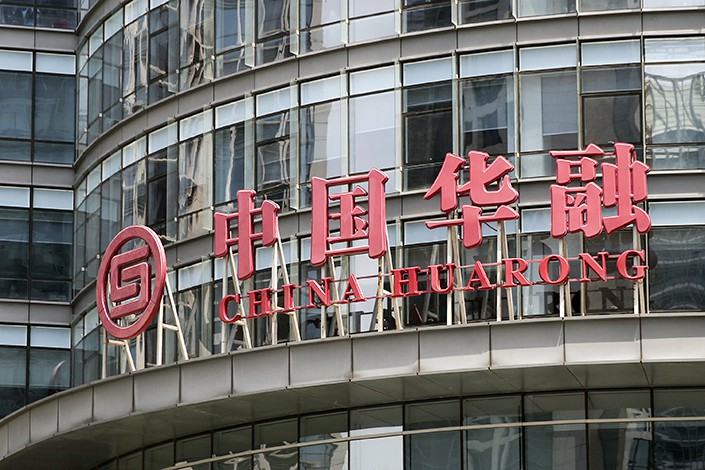Huarong Puts $58.8 Billion of Bad Assets Up for Sale

China Huarong Asset Management Co. is putting 380 billion yuan ($58.8 billion) of bad assets up for sale after the scandal-plagued bad-debt manager reported a record loss last year.
Huarong secured a long-expected rescue plan last month led by state-owned giant Citic Group Corp., China’s second-largest financial holding company. Citic is wholly owned by the State Council, the country’s cabinet. The sale of bad assets reflects Huarong’s determination to speed up the revitalization and restructuring of its inefficient, idle assets and distressed subsidiaries.
The marketing of the bad assets will mainly use online channels, and the company will increase marketing efforts through its official website, online livestreaming, offline promotion, and a micro program, Huarong said in a statement on its website.
The bad assets involve more than 7,000 borrowers in the real estate, manufacturing, mining and other industries, and the collateral includes shopping malls, hotels, residential properties, businesses and mining rights, Huarong said.
Among the assets are machines and transportation equipment, receivables, financial collateral, current assets, intangible assets and real estate, Huarong said. The mining and exploration rights are worth about 12.46 billion yuan, involving 73 borrowers; real estate assets involve 3,721 debtors; land rights, 1,352 debtors; and projects under construction, 204 debtors.
The assets for sale don’t include the stalled Jeju Island tourism project in South Korea in which Huarong invested $3.4 billion, indicating the company might make other disposal plans for the project.
Huarong last month reported long-delayed 2020 results, posting a record 102.9 billion yuan ($15.8 billion) loss, citing the impact of a review of assets and risks and the Covid-19 pandemic. It reported that shareholder equity fell nearly 85%.
Established in 1999, Huarong is one of four national asset management companies created to dispose of a massive volume of nonperforming assets held by China’s big state banks. Their job is buying up distressed debt and trying to recoup as much money as possible by selling or restructuring the assets or applying other methods of recovering the debt.
Huarong has been in turmoil since the downfall of former Chairman Lai Xiaomin in April 2018. Under Lai’s decade-long tenure, Huarong expanded beyond its original mandate and grew into a financial conglomerate engaged in a wide range of financial services, including securities, trusts, banking and financial leasing. But the aggressive expansion through opaque deals with affiliated companies left Huarong with hundreds of billions of yuan of unresolved bad debt.
Lai was sentenced to death and executed in January in the country’s biggest financial-sector corruption case. He was convicted of taking a record 1.79 billion yuan of bribes from 2008 to 2018 as well as bigamy and embezzlement.
Most of Huarong’s risky business endeavors on Lai’s watch were related to overseas expansion, affecting nearly 400 billion yuan of the company’s offshore assets.
The next few weeks and months will be critical in deciding the fate of Huarong. The company said Aug. 18 that a consortium of financial companies led by state-owned heavyweight Citic Group agreed in principle to recapitalize and restructure the company.
Current estimates put the size of the capital injection Huarong needs at around 100 billion yuan. Citic Group will provide the lion’s share of the funds, between 20 billion yuan and 50 billion yuan, most likely raised through bond issuance, sources with knowledge of the matter told Caixin.
Han Wei contributed to this report.
Contact reporter Denise Jia (huijuanjia@caixin.com) and editor Bob Simison (bobsimison@caixin.com)
Download our app to receive breaking news alerts and read the news on the go.
Get our weekly free Must-Read newsletter.

- MOST POPULAR






